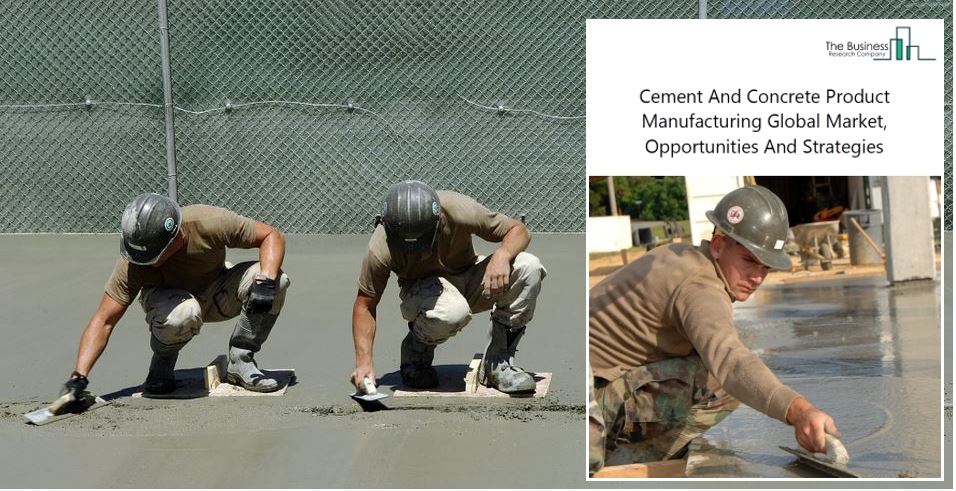There are important questions that can be answered by the Cement And Concrete Global Market Opportunities And Strategies To 2022 report. This report illustrates as well as evaluates the worldwide concrete and cement market. It covers a forecast period starting in 2018 and ends in 2022. It also covers the historic period from 2014 to 2018.

The report answers such questions as “How the market relates to the overall economy and similar markets?” What are the fastest and largest growing cement and concrete markets?” “What will be the forces that are going to shape the market in the future?” and more.
Future Worldwide Economic Growth
It is anticipated that higher spending on infrastructure, as well as the increasing growth in urban populations, will result in expansion. Some factors could slow the concrete and cement market growth. This includes strict regulations on cement plant emissions, more trade protectionism as well as increased interest rates. The integrity of concrete products has to pass business and home inspections with detailed rules.
Segmented Concrete Market
The concrete and cement market is separated by type of product into cement. This includes bricks and blocks, concrete pipes as well as ready-mix concrete. In 2018, the cement market was the largest area of the concrete and cement market at over 46 percent or more than 200 billion. The cement market is anticipated to be the area that will grow the fastest with a future CAGR of more than ten percent.
Types of Products
There is even more segmentation by product into hydraulic cement, portland cement, white cement, aluminous cement, and clinkered cement. In 2018, The portland segment was the largest portion of the market with over 78 billion or 45 percent of the total market.
Largest Region For Concrete Distribution
The largest region in the worldwide global concrete and cement market is the Asia-Pacific area. It accounted for over 43 percent of the total in 2018. The next largest region is Western Europe, followed by North America and others. It is anticipated the future fastest-growing region in the concrete and cement market will be Eastern Europe and Africa. This is going to be followed by the Middle East and Western Europe.
Fragmented Cement and Concrete Market
The worldwide concrete and cement industry is extremely fragmented. The top ten companies in the worldwide concrete and cement market made more than 28 percent of the total 2018 market. Some of the largest companies in the market include HeidelbergCement AG, A.J. Foss, Anhui Conch Cement Company Limited, LafargeHolcim Ltd. as well as China National Building Material Company Limited.
Best Concrete Opportunities
- The best opportunities in the worldwide concrete and cement market will be in the cement market. It is believed the segment of the market will gain over $85 billion of worldwide sales by 2022.
- The best opportunities in the worldwide other concrete products market will take place with the prefabricated structures segment. It is estimated it will increase to more than $10 billion of worldwide annual sales by 2022
- The best opportunities in the global cement market will occur in the clinkered cement segment. It is estimated to gain more than $48 billion of worldwide annual sales by 2022
- The best opportunities of the worldwide concrete blocks, pipes and bricks market is estimated to significantly increase. It is estimated to gain over $18 billion of worldwide annual sales by 2022.
- The best opportunities in the global ready-mix concrete market will increase in the residential segment. It is estimated to increase more than $42 billion of worldwide annual sales by 2022.
Highest Gain
China is the place where the concrete and cement market size will increase the most at more than $60 billion. Adopting IoT technologies used during the production processes is part of the market-trend-based strategies.
It will also include adopting alternative materials during the production of cement. Implementing country-specific retail concepts, expansion in various geographies as well as reinforcing M&A strategies is part of the player-adopted strategies in the concrete and cement industry.
It is recommended some of the strategies used to take advantage of the many opportunities available in the concrete and cement industry may include companies focusing on substituting raw materials and developing new products. They may want to expand in emerging markets, offer a variety of product packages as well as leverage technology to maximize their reach and more.
___________________________________________________________
Interesting related article: “What you should know about concrete walls.”

